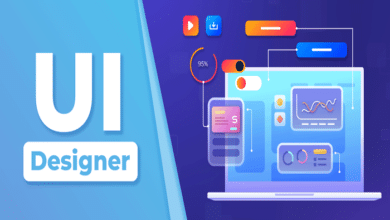
Introduction
In the digital age, the importance of a “friendly interface” cannot be overstated. Whether it’s a website, mobile app, or any software application, the way users interact with your digital presence can make or break their experience. This blog explores the critical elements of a friendly interface and how it contributes to user satisfaction and business success.
What is a Friendly Interface?
A friendly interface refers to a user interface (UI) that is easy to use, visually appealing, and efficiently meets the user’s needs. It should provide intuitive navigation and interaction, making the user’s journey smooth and hassle-free. The core of a friendly interface lies in its ability to communicate functionality in a straightforward and accessible manner.
The Role of Visual Design in a Friendly Interface
Visual design is a pivotal component of a friendly interface. It encompasses the use of colors, typography, and layout to create an environment that is not only pleasing to the eye but also functional. A well-designed visual interface guides the user’s eye and helps them understand the hierarchy and priority of on-screen elements, enhancing the overall usability of the platform.
User-Centric Design Principles
The foundation of a friendly interface is a deep understanding of the end-user. User-centric design principles involve designing with the user’s needs, preferences, and behaviors in mind. This approach ensures that the interface is tailored to provide a seamless experience for its intended audience, making interactions feel natural and effortless.
Accessibility: A Key to Friendly Interfaces
Accessibility is crucial in designing a friendly interface. It ensures that products are usable by people with a variety of disabilities, thus reaching a wider audience. This includes implementing features like keyboard navigability, screen reader compatibility, and sufficient color contrast. An accessible interface not only broadens your user base but also exemplifies inclusivity in technology.
The Impact of a Friendly Interface on User Engagement
A friendly interface significantly boosts user engagement. By reducing frustration and confusion, it allows users to focus on accomplishing their tasks effectively. This leads to longer session times, increased interaction, and ultimately, higher conversion rates. Businesses benefit directly from a well-crafted interface that resonates with users’ needs and preferences.
Best Practices for Creating a Friendly Interface
To create a friendly interface, several best practices should be considered:
- Consistency in design elements across all pages.
- Clear, concise, and visible calls-to-action.
- Fast loading times and responsive design for different devices.
- Regular user testing to gather feedback and make necessary adjustments. These practices ensure that the interface remains user-friendly and effective.
Tools and Technologies for Designing Friendly Interfaces
Several tools and technologies facilitate the design of a friendly interface. Software like Adobe XD, Sketch, and Figma offers comprehensive features for creating and prototyping UI designs. Additionally, front-end frameworks such as React and Angular can help developers implement these designs with responsiveness and interactivity in mind.
The Future of Friendly Interfaces: Trends and Innovations
As technology evolves, so do the trends in interface design. Voice user interfaces (VUIs), augmented reality (AR), and virtual reality (VR) are shaping the future of friendly interfaces. These technologies offer new ways to interact with digital content, making experiences more immersive and natural.
Overcoming Challenges in Interface Design
Designing a friendly interface comes with its set of challenges, such as accommodating diverse user groups, integrating new technologies, and balancing aesthetics with functionality. Overcoming these challenges involves continuous learning, user feedback, and adaptation to technological advancements.
Conclusion
A friendly interface is more than just an attractive design; it’s a crucial component that can determine the success of digital products. By focusing on user-centric design, accessibility, and best practices, developers and designers can create interfaces that are not only functional but also delightful to use.
FAQs
1. Why is a friendly interface important for businesses? A friendly interface improves user satisfaction and engagement, leading to increased retention and conversion rates.
2. Can a friendly interface affect SEO? Yes, search engines favor websites that offer a good user experience, which includes having a friendly interface.
3. How often should a friendly interface be updated? It should be updated regularly based on user feedback and evolving user needs to ensure it remains effective and relevant.
4. What is the first step in designing a friendly interface? The first step is understanding the user’s needs through research and persona development.
5. Are there any common mistakes in designing friendly interfaces? Common mistakes include overloading the user with information, inconsistent design elements, and neglecting accessibility.





